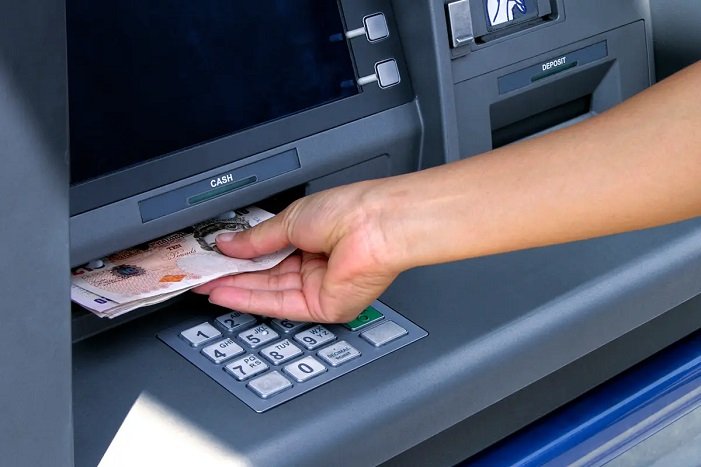
Automated Teller Machines (ATMs) are essential tools in modern banking, offering convenience and accessibility for managing cash and transactions. Over the years, ATMs have evolved significantly, integrating advanced technologies and features. This blog post explores the latest news and trends in the ATM industry, highlighting technological advancements, security improvements, and emerging trends.
Recent Innovations in ATM Technology
Contactless Transactions
One of the most notable advancements in ATM technology is the integration of contactless transactions. Similar to contactless payments with credit and debit cards, this feature allows users to complete transactions without physically inserting their cards into the machine. Instead, users can use Near Field Communication (NFC) technology or QR codes to authenticate and process transactions. This innovation enhances convenience and reduces the risk of card skimming.
Biometric Authentication
Biometric authentication is making its way into ATMs, providing an additional layer of security. Fingerprint scanners, facial recognition, and iris scanning are some of the biometric technologies being integrated into ATMs. These features help prevent fraud and unauthorized access by ensuring that only the account holder can access their funds. Biometric authentication also speeds up the transaction process by eliminating the need for PIN entry.
Advanced Security Features
Security remains a top priority in the ATM industry. Recent developments include the implementation of advanced security features such as encryption, anti-skimming devices, and real-time transaction monitoring. Encryption protects sensitive data transmitted between the ATM and the bank, while anti-skimming devices prevent unauthorized devices from capturing card information. Real-time monitoring systems can detect suspicious activities and trigger alerts to prevent fraud.
Enhanced User Interfaces
Modern ATMs are equipped with user-friendly interfaces that improve the overall customer experience. Touchscreen displays, multilingual support, and intuitive menus make it easier for users to navigate and complete transactions. Some ATMs even offer personalized services, such as transaction history and account summaries, enhancing the convenience of managing finances.
Emerging Trends in the ATM Industry
Cryptocurrency Integration
The rise of cryptocurrencies has led to the integration of digital currency functionality into ATMs. Some ATMs now support cryptocurrency transactions, allowing users to buy, sell, and exchange cryptocurrencies such as Bitcoin and Ethereum. This trend reflects the growing acceptance of digital currencies and their impact on traditional banking systems.
Eco-Friendly ATMs
Environmental sustainability is becoming an important consideration in the design and operation of ATMs. Eco-friendly ATMs are being developed with energy-efficient components, reduced power consumption, and recyclable materials. Additionally, some ATMs are powered by renewable energy sources, such as solar panels, to minimize their environmental footprint.
Cashless ATMs
Cashless ATMs, also known as “cashless kiosks,” are an emerging trend that focuses on providing banking services without dispensing physical cash. These machines allow users to perform transactions such as bill payments, money transfers, and account inquiries without handling cash. Cashless ATMs are particularly useful in areas where cash usage is declining or where cash handling is challenging.
Integration with Mobile Banking
The integration of ATMs with mobile banking apps is enhancing the convenience of managing finances. Users can now access their mobile banking accounts, receive transaction notifications, and perform certain transactions through their smartphones. This seamless integration allows for a more connected banking experience and improves overall customer satisfaction.
Security Concerns and Measures
ATM Skimming
ATM skimming remains a significant security concern, with criminals using devices to capture card information and PINs. To combat this threat, banks and ATM operators are implementing anti-skimming technology, regular maintenance, and enhanced monitoring systems. Public awareness campaigns also play a crucial role in educating users about potential threats and best practices for safe ATM usage.
Cybersecurity Threats
As ATMs become more connected and integrated with digital systems, cybersecurity threats are a growing concern. Protecting ATMs from hacking, malware, and other cyberattacks requires robust security measures, including encryption, firewalls, and regular software updates. Banks and financial institutions must stay vigilant and invest in advanced cybersecurity solutions to safeguard their ATM networks.
Physical Security
Physical security of ATMs is also critical to prevent theft and vandalism. Measures such as reinforced casings, surveillance cameras, and secure installation locations help protect ATMs from physical attacks. Collaboration between banks, law enforcement, and security providers is essential for addressing physical security challenges and ensuring the safety of ATM infrastructure.
Global ATM Market Trends
Growth in Emerging Markets
The ATM industry is experiencing significant growth in emerging markets, driven by increasing financial inclusion and urbanization. In countries with developing banking infrastructures, ATMs are playing a crucial role in expanding access to banking services. The demand for ATMs in these regions is expected to continue growing as more people gain access to financial services.
Integration with Digital Banking
The convergence of traditional banking with digital banking services is influencing the ATM market. Banks are integrating ATMs with their digital platforms to provide a unified customer experience. This includes features such as account management, transaction alerts, and personalized services that bridge the gap between physical and digital banking channels.
Know more about: Top Undergraduate Business Schools
Regulatory Developments
Regulatory developments and compliance requirements are shaping the ATM industry. Governments and regulatory bodies are implementing standards and guidelines to ensure the security, accessibility, and functionality of ATMs. Staying compliant with these regulations is essential for banks and ATM operators to avoid penalties and maintain customer trust.
Conclusion
The Automated Teller Machine (ATM) industry is undergoing rapid transformation, driven by technological innovations, emerging trends, and evolving security concerns. From contactless transactions and biometric authentication to cryptocurrency integration and eco-friendly designs, ATMs are becoming more advanced and user-centric. As the industry continues to evolve, staying informed about the latest developments and trends is crucial for understanding the impact of ATMs on the banking landscape and ensuring the continued security and convenience of financial transactions.




